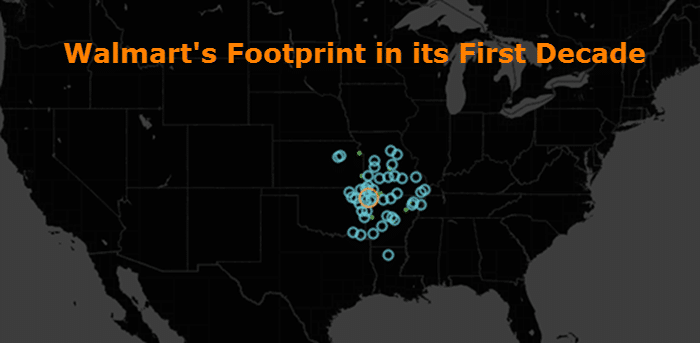I estimate that 60 percent of the business owners I’ve served have profit sharing plans for key managers or all team members. But that’s only one type of an employee money sharing program. You may have heard about two others but never implemented yourself. Here are all three:
- Profit Sharing
- Gainsharing
- Value Sharing
In the brief discussion below, I will provide a simple, easy-to-explain definition of each employee money-sharing program. I will anticipate your questions about each and do my best to answer them.
Profit Sharing
The name itself defines the concept. An owner decides how much profit will be shared with the employees and pays these sums monthly, quarterly, or annually.
The profit sharing plan can be based on hitting or exceeding a profit target decided at the beginning of a budget or calendar year. It could also be based on a straightforward profit payout, such as 2%, 5%, or 10% of the bottom line.
Here are some great examples of profit sharing plans at other companies:
- 37signals – scroll to the section on Employee Profit Sharing
- Buffer – this is a great read
- ConvertKit (now Kit) – it’s short but still a good read
Below are some of my favorite questions on profit sharing:
Question: You mentioned monthly profit sharing above. Do you recommend that?
Mark | G3CFO: I have never implemented such a plan. However, I was once an employee at a radio operation that paid us a monthly profit sharing bonus and a more significant bonus at year-end. This can work for a boring business with stable and predictable operating cash flow, but don’t call me a fan of such a program.
Question: Who is profit sharing for?
Mark | G3CFO: This is opinion only. Everyone. Some of my clients share the wealth with management team members only. Why not share it with everyone?
Question: Should I share profits quarterly or annually?
Mark | G3CFO: This is a psychology question, or it should be. As an employee, I like getting that big check or ACH every January. If I get quarterly distributions, I start to take them for granted. If you do your payouts annually, show an updated monthly scoreboard with a projected year-end total. That makes the number ‘real’ even though I won’t get my payout until after Christmas. There is no right or wrong. You need to do what works in your company.
Question: What’s the biggest mistake CEOs make with their profit sharing plans?
Mark | G3CFO: That’s easy. CEOs try to overcomplicate the payout formula. Don’t do that. First, your staff needs to understand how the plan works and how they can improve the payout without causing unintended consequences to the future financial health of the business. If you overcomplicate the plan, there will be a disconnect between the bottom line and your staff’s efforts to improve the overall business. Go back and read the plan created by 37signals. It’s simple.
Question: Does profit sharing improve profits?
Mark | G3CFO: Here’s what I tell my clients. Don’t share profits to manipulate the team. Share profits because you love ’em. If you care, share. I do not have hard evidence that points to higher profits when owners share their profits with employees. However, I have plenty of anecdotal evidence that there is less management of people and greater levels of self-management by all team members. Senior leaders also spend more time coaching and mentoring vs. managing and supervising people. If you have a different perspective, I want to hear it.
Gainsharing
I am not a business historian. However, I’ve found several documents that are nearly 100 years old and mention gainsharing—those who have studied gainsharing attribute Joseph Scanlon to popularizing the concept. However, the pioneers of this movement were standing on the shoulders of other CEOs who started to figure out that employee participation in business improvement was a good thing.
You will find many articles if you search for ‘Scanlon gainsharing plan’ or something similar. My favorite is the one that describes the mental model EPIC. The 2007 article is Scanlon Principles Lay the Groundwork for Lean.
Let’s define gainsharing, but I will not pull one from a textbook. Gainsharing is sharing part of the gains of a one-off improvement project.
Many gainsharing plans are profit sharing plans. However, my definition reveals the differences between gainsharing and profit sharing.
Question: Have you ever implemented a gainsharing plan?
Mark | G3CFO: Never. However, I like introducing the concept to CEOs because it can be a tool down the road. Here’s the reality I’ve experienced. An employee working for Brent (the owner) comes up with a clever idea to eliminate four parts in favor of one on a seal-coating machine, which saves us thousands of dollars annually. Brent gives that person a one-time discretionary bonus, which is impulsive vs. compulsive. I have similar stories with other clients. I received a $5,000 and a $7,500 bonus early in my career. Those bonuses were part gainsharing and part value sharing (which is covered below). I certainly know what they are. Implementation for the right situation is tricky if a profit sharing plan is already in place.
Question: Do you recommend gainsharing plans as you have defined them?
Mark | G3CFO: Ask me tomorrow and one month from now; my answers might differ. There will always be a time and a place for gainsharing. The activities leading to a gain share are typically accidental (think of the mad scientist who invented a great mousetrap by accident). How do you plan a gainsharing plan for that? However, if a particular type of business is constantly working on continuous improvement projects, a gainsharing program could work if it does not interfere with a well-conceived profit sharing plan.
Question: What is better, a profit sharing plan or gainsharing?
Mark | G3CFO: Well, not my favorite question. One is not better than the other. Both are different. Ask this question instead as it relates to employee participation and continuous improvement in the company: What’s the job to be done with either of these tools? For one tool, share if you care. For the other, share gains to avoid pain. I trust you to test, try, and improve on either of these plans should you implement one or both.
Value Sharing
I have never searched the Internet for this term. If you find a definition, it might differ from what I’m about to share.
My simple definition of value sharing is the money an owner shares with employees after any liquidity event. The word ‘any’ is important. Value sharing does not happen when an owner sells his/her business before stepping away from it. Value sharing can occur when a subsidiary, division, or strategic asset is sold.
I love value sharing plans because that’s how I became debt-free in my 30s (no house payments, student or car loans, or consumer debt). Accordingly, I’m all in with value sharing plans. Plus, value sharing is a natural extension of the owner’s giving mindset.
However, I have some strong recommendations for value sharing:
- Don’t memorialize a value sharing plan unless you are a startup. This discussion is not about startups. It’s about growth-oriented businesses with CEO owners nurturing the development of their companies and teams. Instead, consider how you will share value once you approach a liquidity event. What we don’t want is an obligation you have to adhere to. This is all about giving without compulsion.
- Well before the liquidity event, ask your tax partner to walk through the math and tax implications for you and those you share money with. I will leave this out and let you learn it on your own. You’ll have two significant a-ha moments during that meeting.
- Start thinking about how you’ll share your capital gains with employees when you sell your company. Have you? Will you?
We’re Missing One More Employee Money Sharing Plan
Profit and gainsharing plans provide monetary rewards in the near term. Value sharing occurs beyond the horizon. What about five, seven, or ten years out?
I remember Jack Stack in The Great Game of Business stating he wanted employees with paid-off mortgages. I don’t remember the context from which he said that in his book. But his idea has forever stuck with me. We don’t just need short-term rewards programs, and those triggered far into the future. We need a rewards program during the middle years of an employee’s tenure.
If I ever become a CEO, one of my first jobs is to hire the best phantom stock expert to create a workable and understandable plan that applies to 100 percent of the staff. That’s the easy part. Funding the plan is hard, and I have an idea that involves creating and accelerating liquidity events. Could I make it work? That remains to be seen.
I wish I could leave you with three earth-shattering ideas on this concept. I won’t. Instead, listen to this interview I did with one of the best subject-matter experts on phantom stock plans. When you finish listening, start brainstorming how to implement a plan in your company.
Next Steps
- Now what? You’ve learned my three definitions of employee money reward programs. What are you going to do now?
- Have you considered a phantom stock plan? If so, do you have ideas for setting one up? How will you do that?
- Do you need a helping hand or a sounding board? If so, connect with me on LinkedIn first. Then, we can set up a Zoom call to chat.








